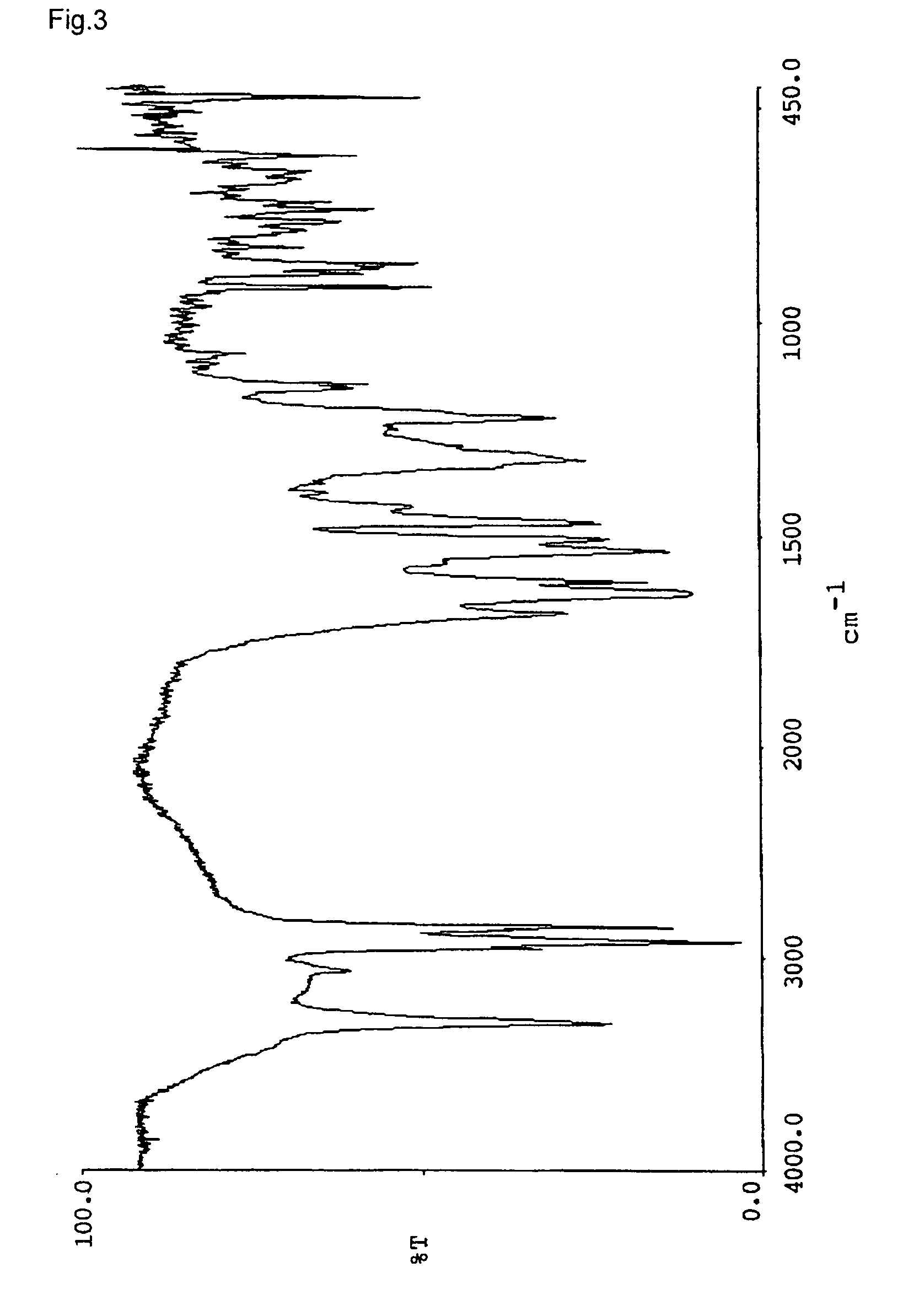Charge controllers
a technology of charge controller and charge controller, which is applied in the direction of instruments, organic chemistry, optics, etc., can solve the problems of insufficient amount of electrostatic charge generated, and achieve the effects of high chargeability, excellent compatibility with resins, and simple process
- Summary
- Abstract
- Description
- Claims
- Application Information
AI Technical Summary
Benefits of technology
Problems solved by technology
Method used
Image
Examples
example 1
2-hydroxy-3-hydroxycarbonyl-6-n-octylaminocarbonyl Naphthalene
[0057]
[0058]2-hydroxy-6-hydroxycarbonyl-3-methoxycarbonyl naphthalene 17.3 g was dispersed in tetrahydrofuran 170 g, N,N-dimethylformamide was added thereto, and then, thionylchloride 12.5 g was added and the mixture was reacted at 50° C. for 2 hours. After that, the remaining thionyl chloride was distilled out together with the solvent. N-octylamine 18.4 g in tetrahydrofuran 170 g was added to the reaction and reacted under reflux for about 15 hours. After the reaction, the solvent was distilled out and then methanol 150 g was added to the reaction to give dispersion. The precipitates were collected by filtration and washed well with methanol and water. Thus obtained 2-hydroxy-3-metoxycarbonyl-6-n-octylaminocarbonyl naphthalene 15.2 g was dispersed in methanol 152 g, and sodium hydroxide 5.1 g in water 100 g was added thereto. The mixture was reacted for 2 hours at 70° C., treated with carbon, and the pH was adjusted to ...
examples 2 – 7
Examples 2–7
[0066]Naphthol derivatives were prepared in the same manner as Example 1 except for using amine or alcohol listed in the table 1 instead of n-octylamine. The triboelectric charge and the decomposition point of the naphthol derivatives were determined. The results are shown in Table 1. The infrared absorption spectrums (KBr) of the respective compounds are shown in FIGS. 2–7.
[0067]
TABLE 1amine / tribofrictionaldecompositionEx.alcoholnaphthol derivativecharge (μC / g)temp. (° C.)2n-C4H8NH2−15.33143n-C12H25NH2−50.23104n-C18H37NH2−51.03105−29.13026−13.02907n-C16H33OH−23.6328
formulation examples
[0068]Examples of toner formula are shown below. In the following compositions, “part(S)” means “part(s) by weight”. The formulation examples shown below are intended to illustrate the invention and not to be construed to limit the scope of the invention in any means.
Black Toner
[0069]Styrene-acrylic resin 100 parts, carbon black 6 parts and the compound of Example 1 2 parts are mixed uniformly with the ball mill, and then, the mixture is molten and kneaded with the dispersion kneader. The kneaded mixture is roughly crushed with the vibration mill and further pulverized with the jet mill to give the black toner.
Color Toner (Cyan)
[0070]Color toner (cyan) may be prepared in a manner similar to the black toner except for using polyester resin instead of styrene-acrylic resin and phthalocyanine blue instead of carbon black.
Color Toner (Yellow)
[0071]Color toner (yellow) may be prepared in a manner similar to the black toner except for using polyester resin instead of styrene-acrylic resin...
PUM
| Property | Measurement | Unit |
|---|---|---|
| particle size | aaaaa | aaaaa |
| particle size | aaaaa | aaaaa |
| decomposition point | aaaaa | aaaaa |
Abstract
Description
Claims
Application Information
 Login to View More
Login to View More - R&D
- Intellectual Property
- Life Sciences
- Materials
- Tech Scout
- Unparalleled Data Quality
- Higher Quality Content
- 60% Fewer Hallucinations
Browse by: Latest US Patents, China's latest patents, Technical Efficacy Thesaurus, Application Domain, Technology Topic, Popular Technical Reports.
© 2025 PatSnap. All rights reserved.Legal|Privacy policy|Modern Slavery Act Transparency Statement|Sitemap|About US| Contact US: help@patsnap.com



